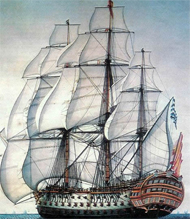FX Sanchez now a Daughters of the American Revolution Patriot!
 |
| Rev. Dee Graham, DAR Regent Cindy Weatherby and Austin Graham celebrate her DAR acceptance. |
DAR accepts Austin Graham, FX's 5th great granddaughter
By admitting FX Sanchez as American Revolutionary patriot
Meeting the exacting criteria for new ancestors meriting patriot status in the Daughters of the American Revolution, Francisco Xavier Sanchez's fifth great granddaughter, Austin Graham, received acceptance into the Princess Hirrihigua Chapter of the DAR.
Thanks to the detailed work of Cynthia Weatherby, Chapter Regent, who worked with information supplied by Austin's mother, the Rev.Dee Graham, and extensive genealogy documented by her grandmother, Edith Jones Graham, the rigid qualifications of DAR were met and approved. Now, women who can provide proof of being direct descendants of FX Sanchez are also eligible to join the national organization under one of the first Spanish patriots qualified.
He qualified for his patriotic service to the American Revolution by "rendering aid to the Spanish and American prisoners of war" who were held in the Castillo de San Marcos, Saint Augustine's historic fort. Documentation of this service during the era of British occupation of Florida was found in WEBER, "JOSEPH SMITH'S DIARY" SC HIST & GEN MAG, VOL 34, #1, PP 31-32; TANNER, ZESPEDES IN EAST FL, P 44.
This acceptance makes Austin a fourth generation DAR member, although her mother, grandmother and great grandmother Edith Day Jones qualified under the Day lineage.
FX Sanchez's entry on the national DAR website reads:
RESIDENCE
SPOUSE
ASSOCIATED APPLICATIONS AND SUPPLEMENTALS
To look up this information for yourself: (Francisco Xavier Sanchez, DAR Patriot)
For more information about becoming a DAR member through Spanish Florida heritage, this posting introduces the process:
Researching Your Spanish Patriot
Can you trace your family back to those living in Nueva España during the American Revolution 1776 - 1783?
If so, you may be eligible for membership in the Daughters of the American Revolution.
Can You Trace Your Lineage To A Patriot Who Served In Spanish America?
DAR members have traced their ancestry back to more than 400 Spanish patriots of the American Revolution. These patriots were residents of either Spanish Louisiana or Nueva España. Nueva España included portions of the present day states of Texas, California, New Mexico, Colorado, and Arizona, as well as Mexico. Spanish forces also served in Cuba and other parts of the Caribbean. Ongoing research continues to identify new Spanish patriots.
How were these people involved in the American Revolution?
Donativos
In 1780, Carlos III, King of Spain, issued a Royal Decree that all subjects in Nueva España, or New Spain, make a voluntary contribution, in the form of a donation, to help fund the American Revolutionary War. Every citizen of Spanish America was asked to donate one or two pesos to the cause.
The Gálvez Expedition
Many Spanish patriots served under General Bernardo de Galvez in his Gulf Coast campaigns, including the Battles of Pensacola and Mobile. They were also stationed at militia posts throughout Spanish Louisiana. Some Spanish patriots were at the Battle of Fort San Carlos, in present day Saint Louis, and others were recruited from the Canary Islands to the Louisiana Infantry Regiment.
Texas Longhorn Cattle
Could your ancestor be one of the Texas cattlemen who supplied approximately 10,000 head of Texas longhorn cattle in response to a request by Gálvez in 1779? If so, you may have a Spanish patriot.
Useful Sources
The following resources are helpful for your research; however, a translator may be required as some are written in Spanish:
- The Canary Islanders of Louisiana, Gilbert C. Din
- La participación canaria en la formación y reclutamiento del batallón de Luisiana, Miguel Molina Martínez
- Spanish Records, Lists of Men Under General Don Bernardo de Gálvez in his Campaign against the British, 1779, C. Robert Churchill
- Honor and Fidelity, Jack D. Holmes
- José de Ezpeleta, Gobernador de la Mobila, 1780-1781, F. de Borja Medina Rojas
- The Texas Connection with the American Revolution, Robert H. Thonhoff
- New Mexico’s Contributions to the American Revolutionary Cause from Original Letters and Documents, 1779-1785, Harriett McCallum
- Cuba 1753-1815, Crown, Military and Society, Allan Kuethe
- The Journal of Don Francisco Saavedra de Sangronis, Aileen Moore Topping, translator, and Francisco Morales Padrón, editor
Tracing Your Lineage
When researching a Spanish Patriot, ask yourselfp the following questions:
- What do you know about that person?
- Where did he or she live?
- What type of Revolutionary War service did he or she perform?
Identifying who would be recognized as patriots through Spain’s contribution takes some detective work. It is best to start with the lineage by working your way back through the generations until you find a patriot.
When researching a Spanish patriot, you need to be aware of “What was Spanish America during the American Revolution?” This includes what is now the American Southwest, the Gulf Coast region and parts of the Central United States, and other areas, such as Mexico, Central America, South America, and Cuba.
For more information on Los Floridanos, visit their website: Los Floridanos Society.
###




